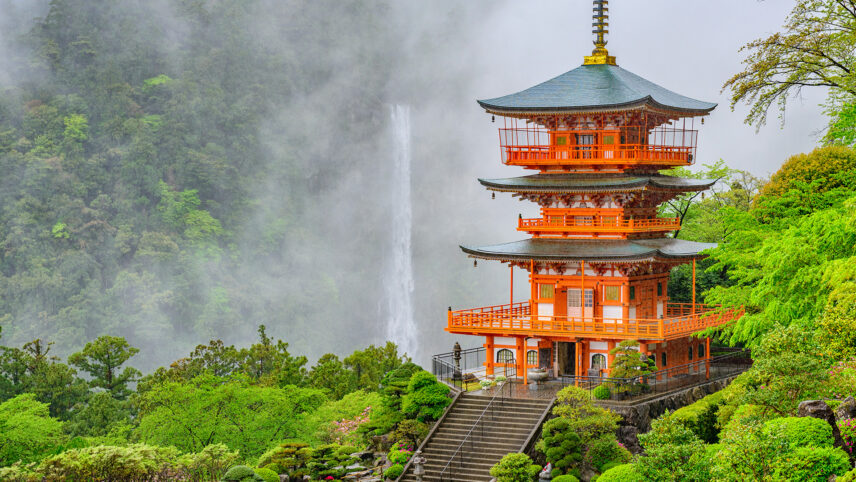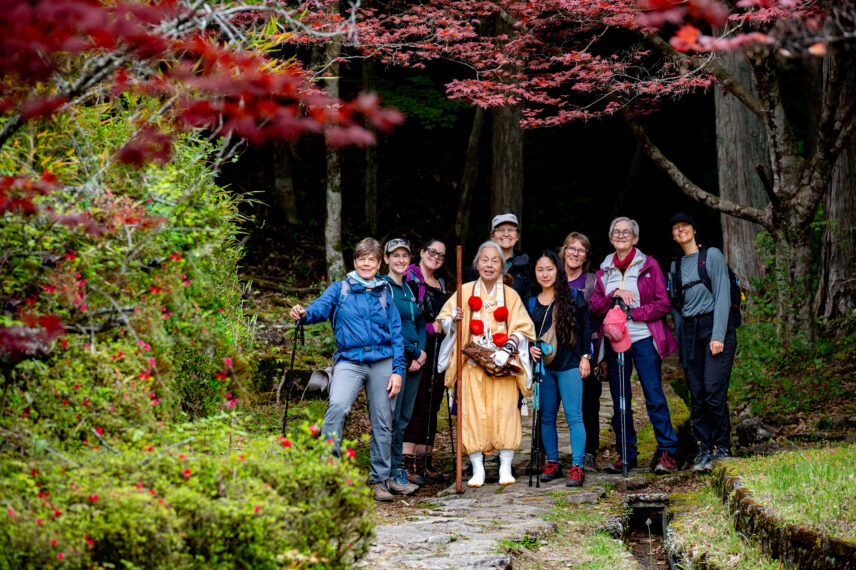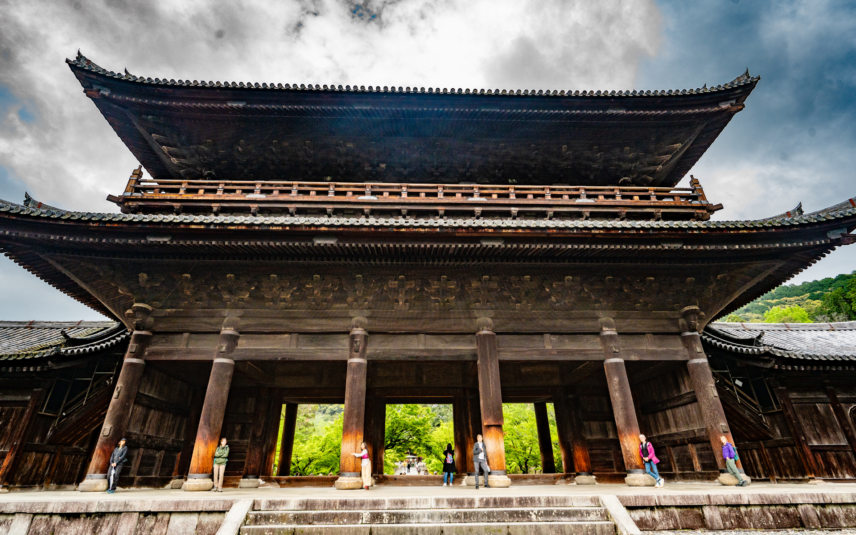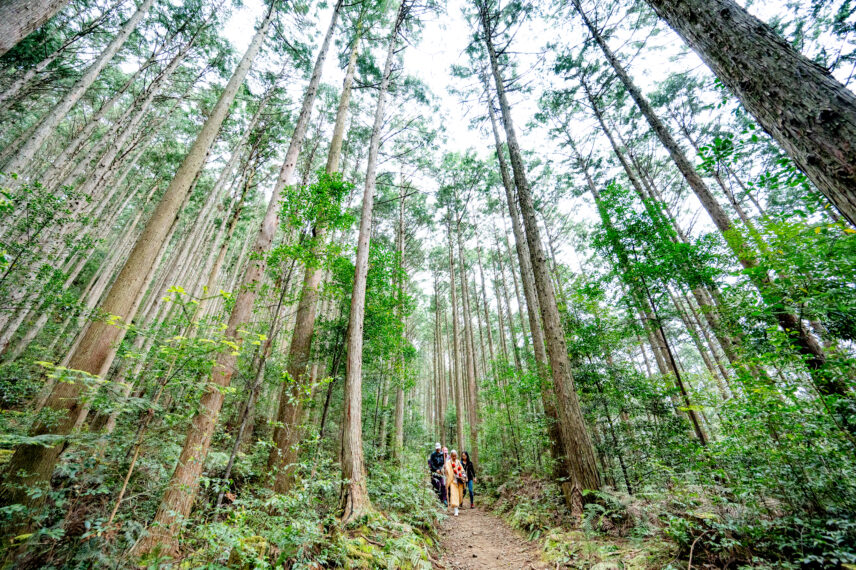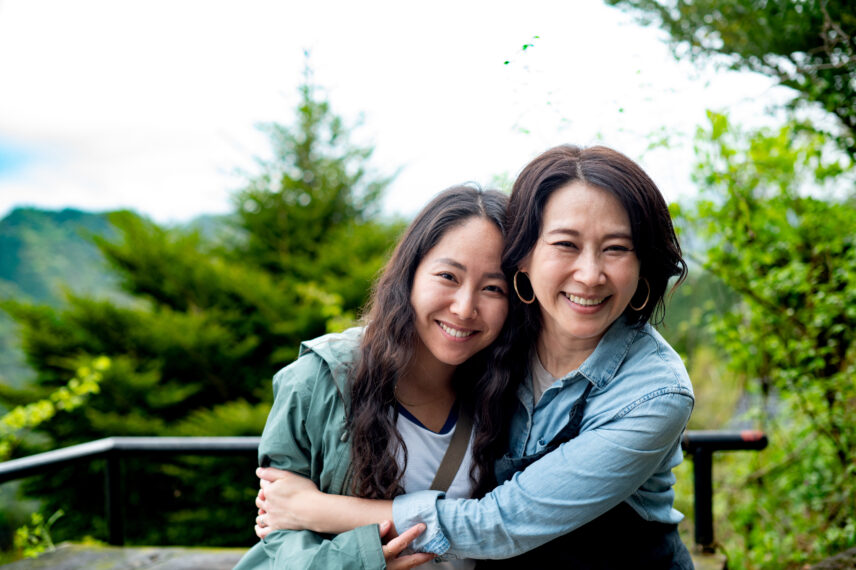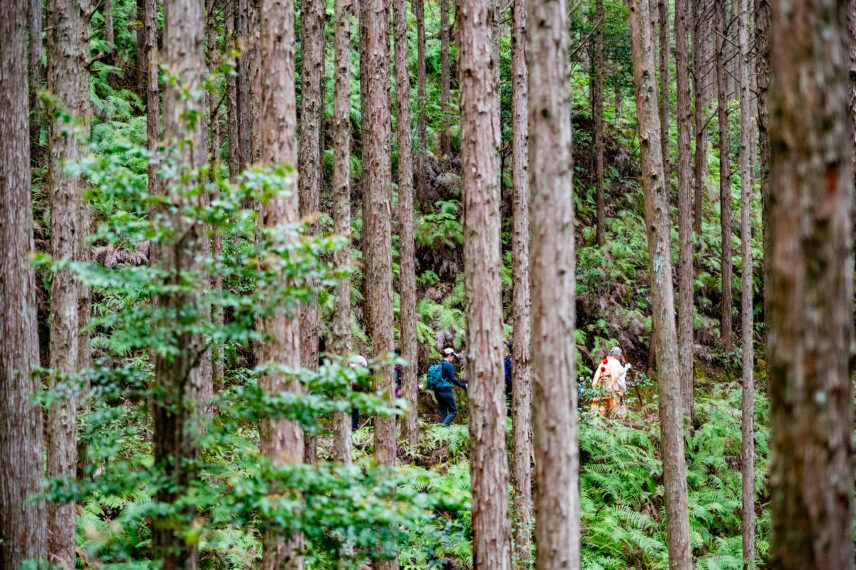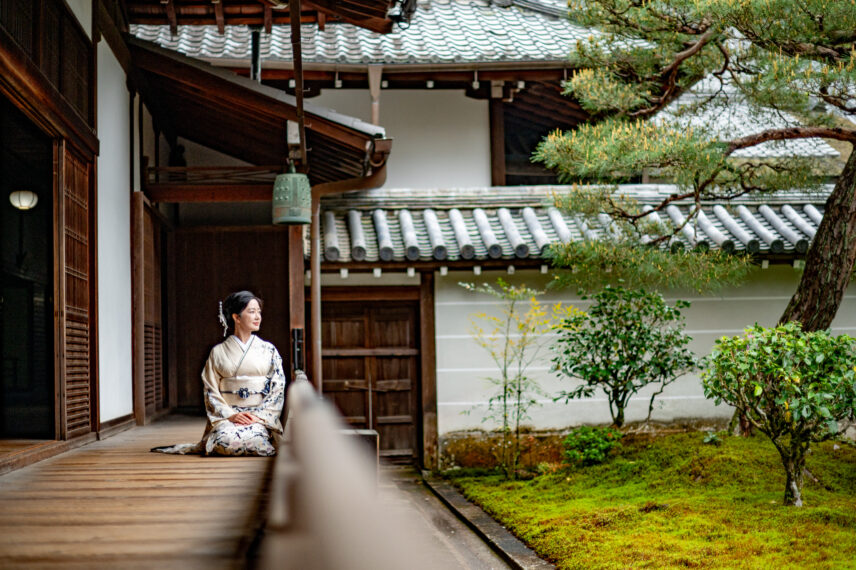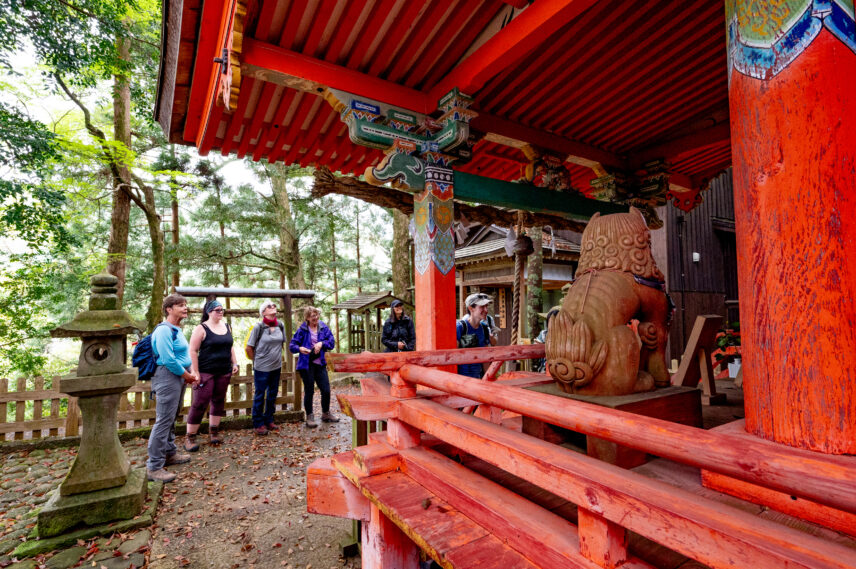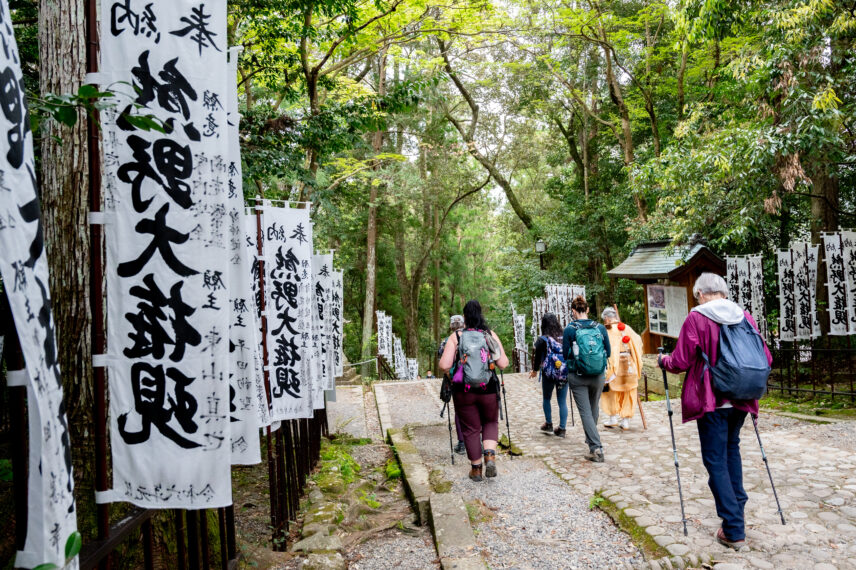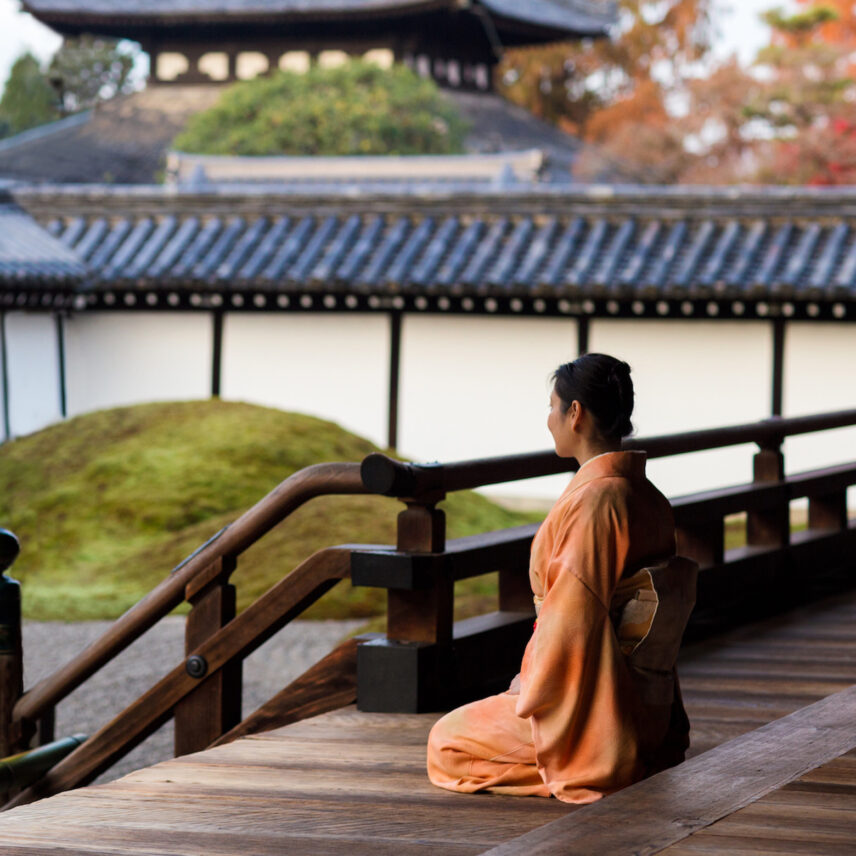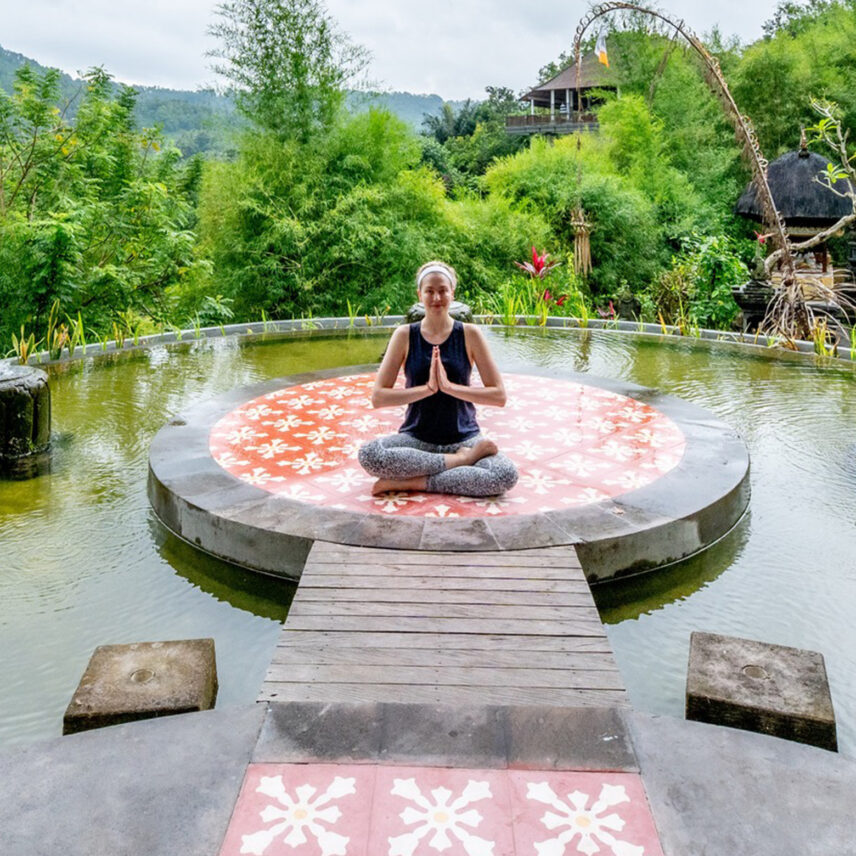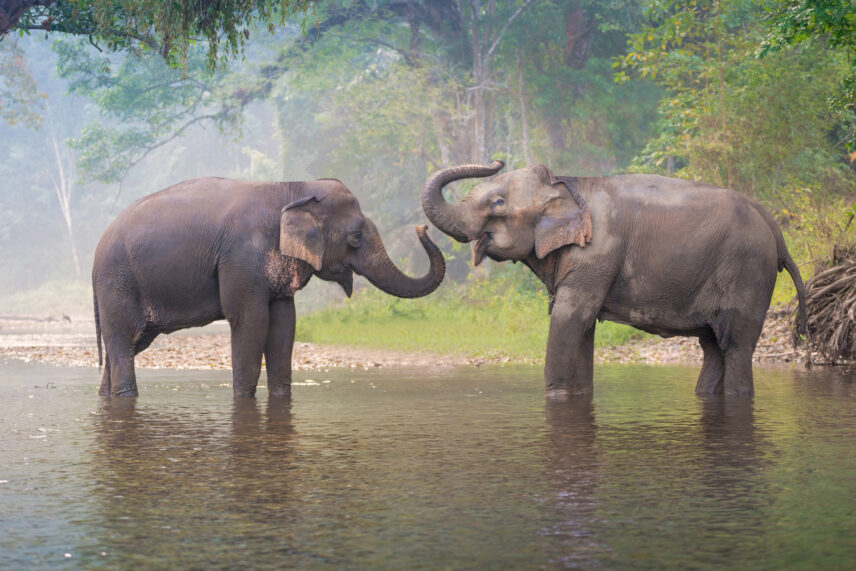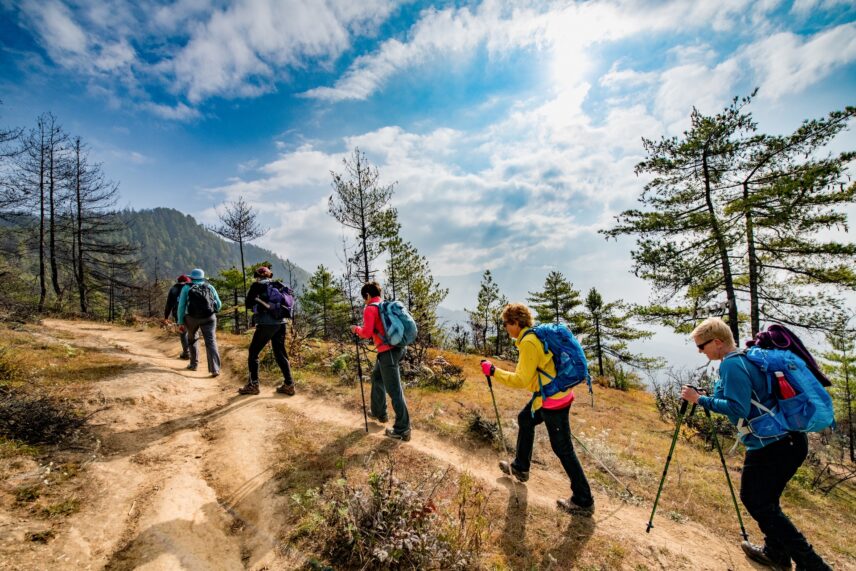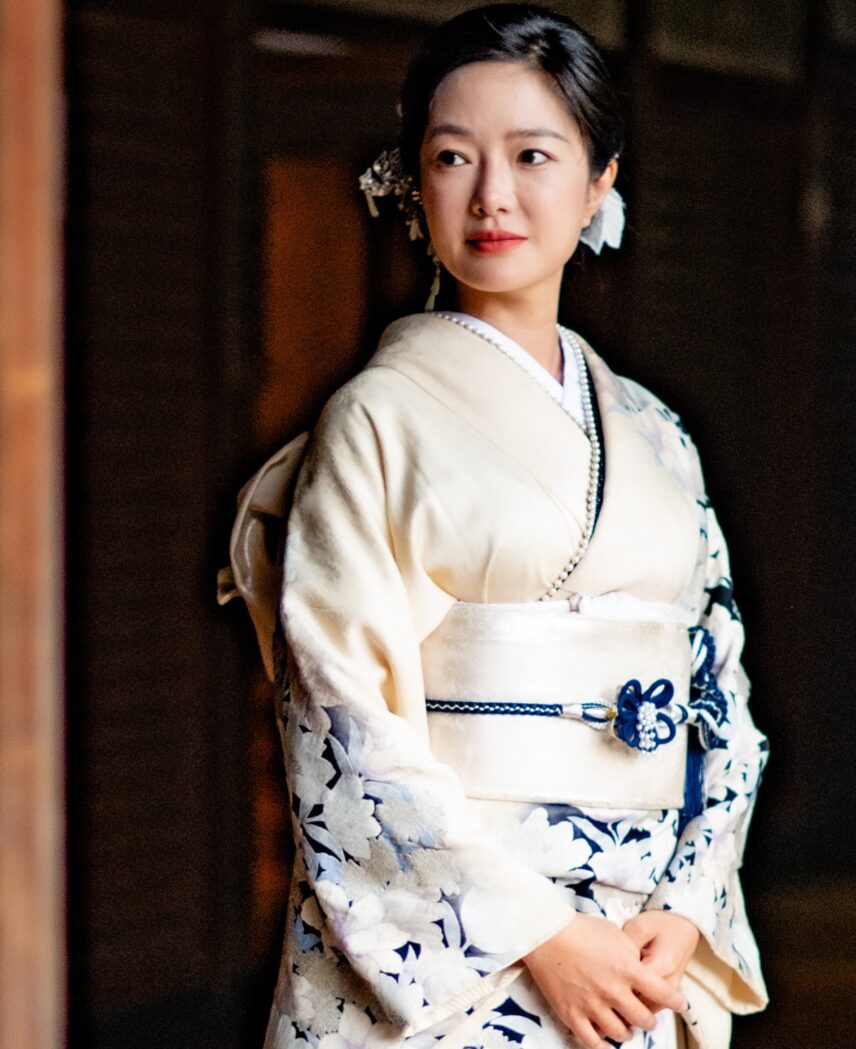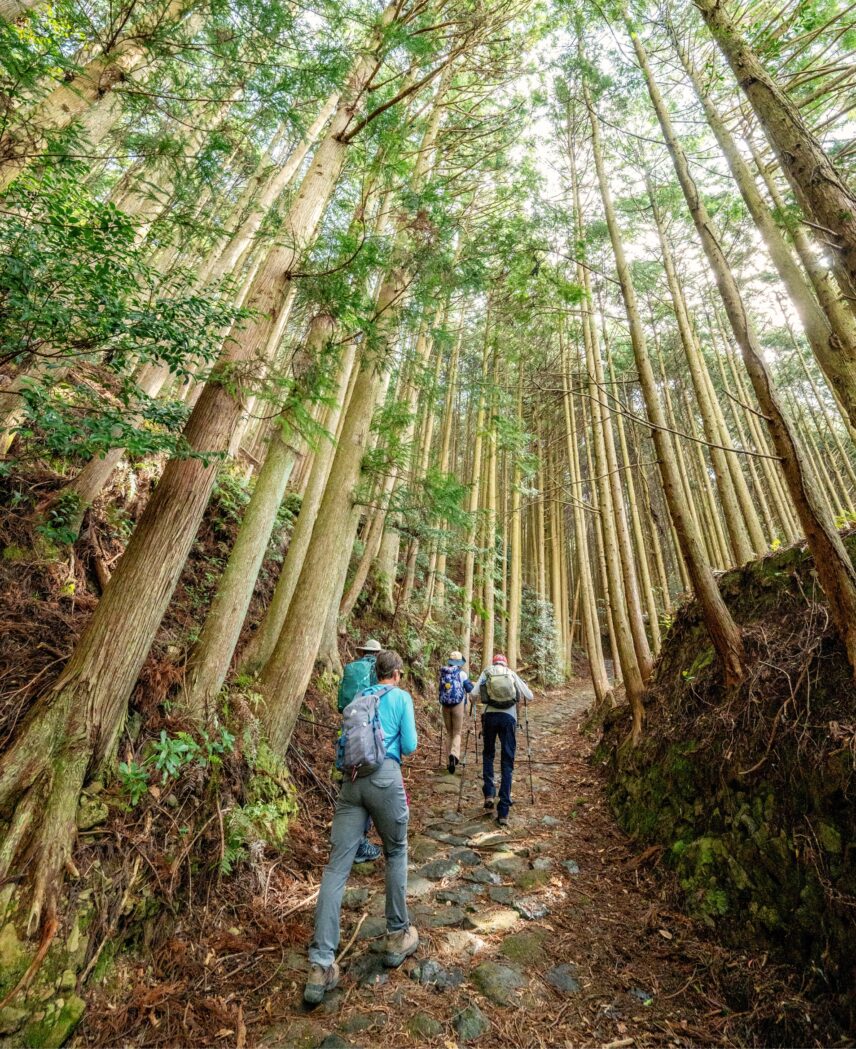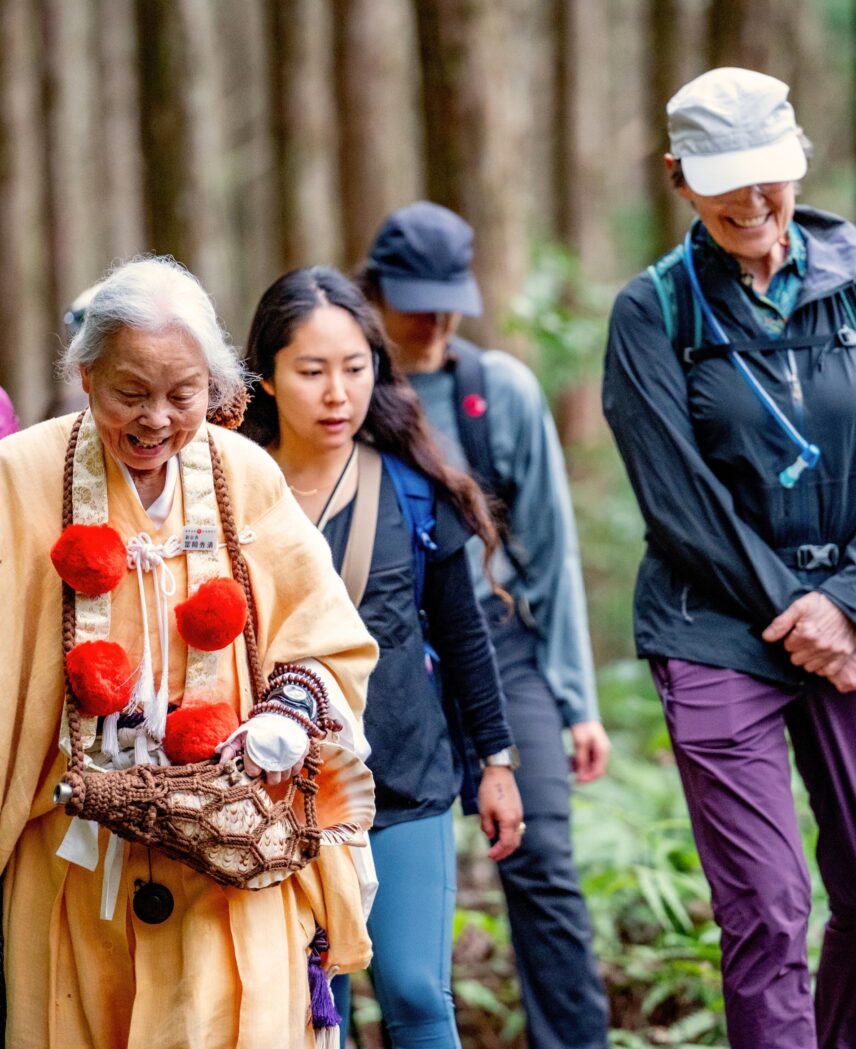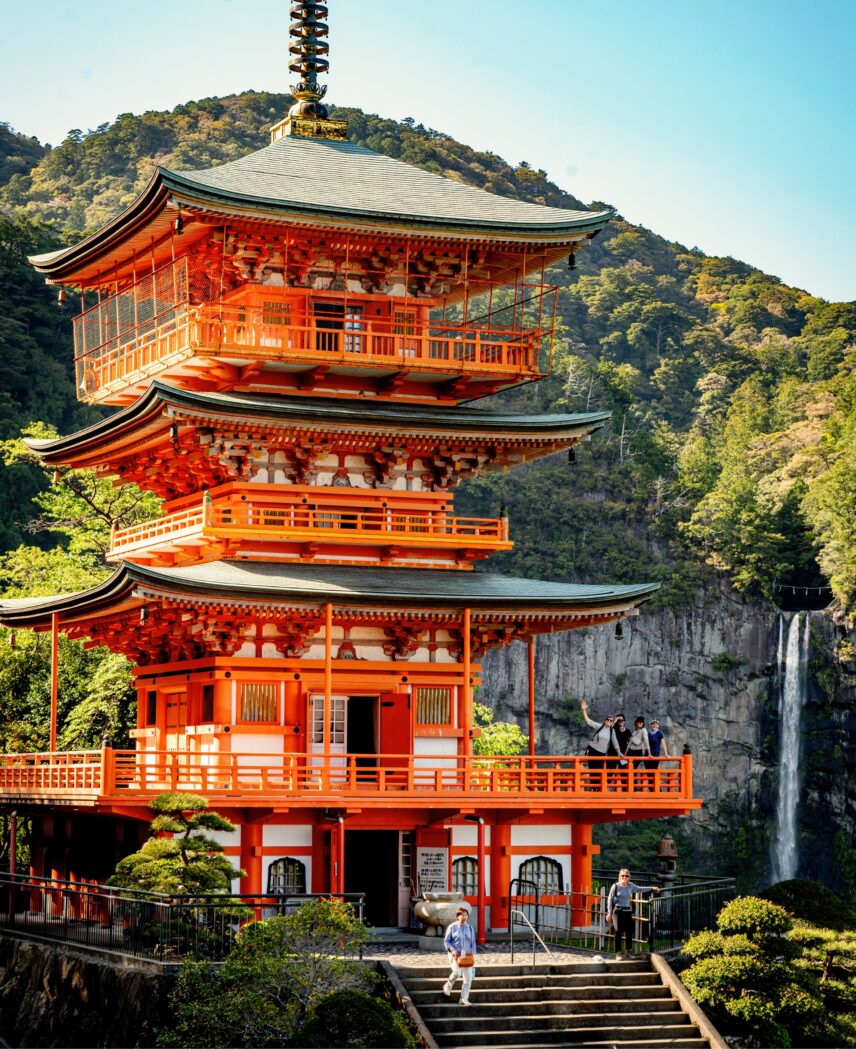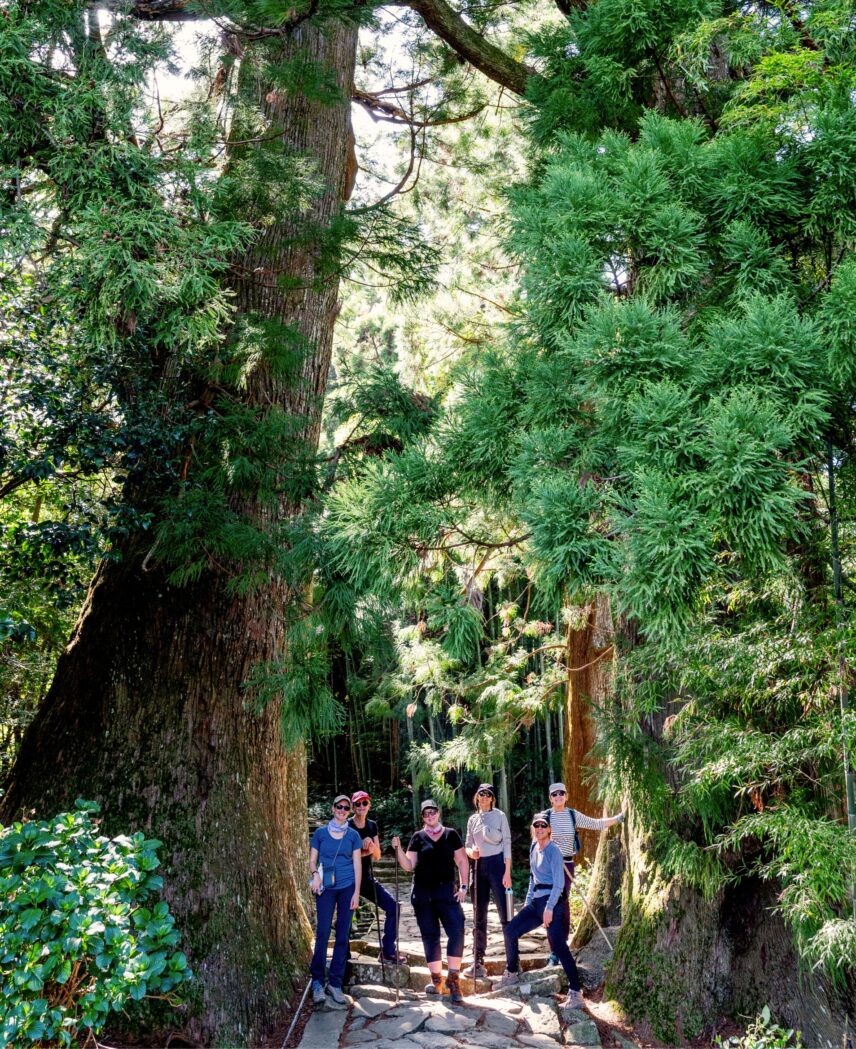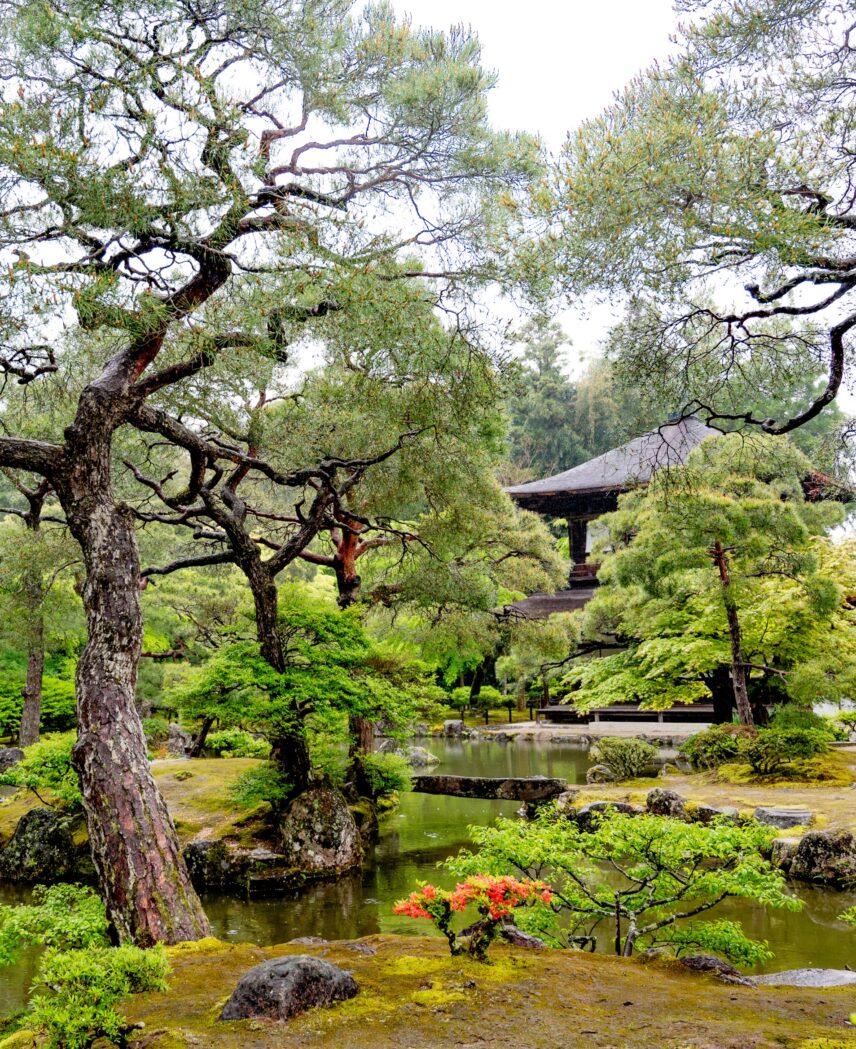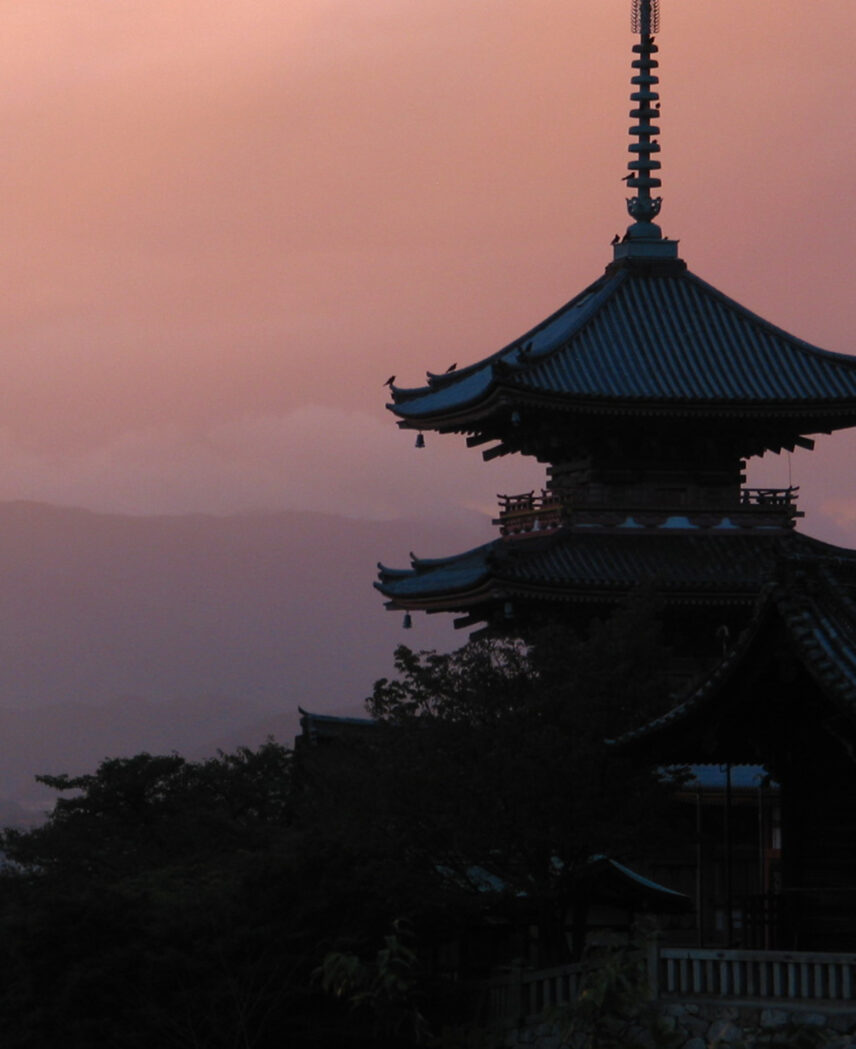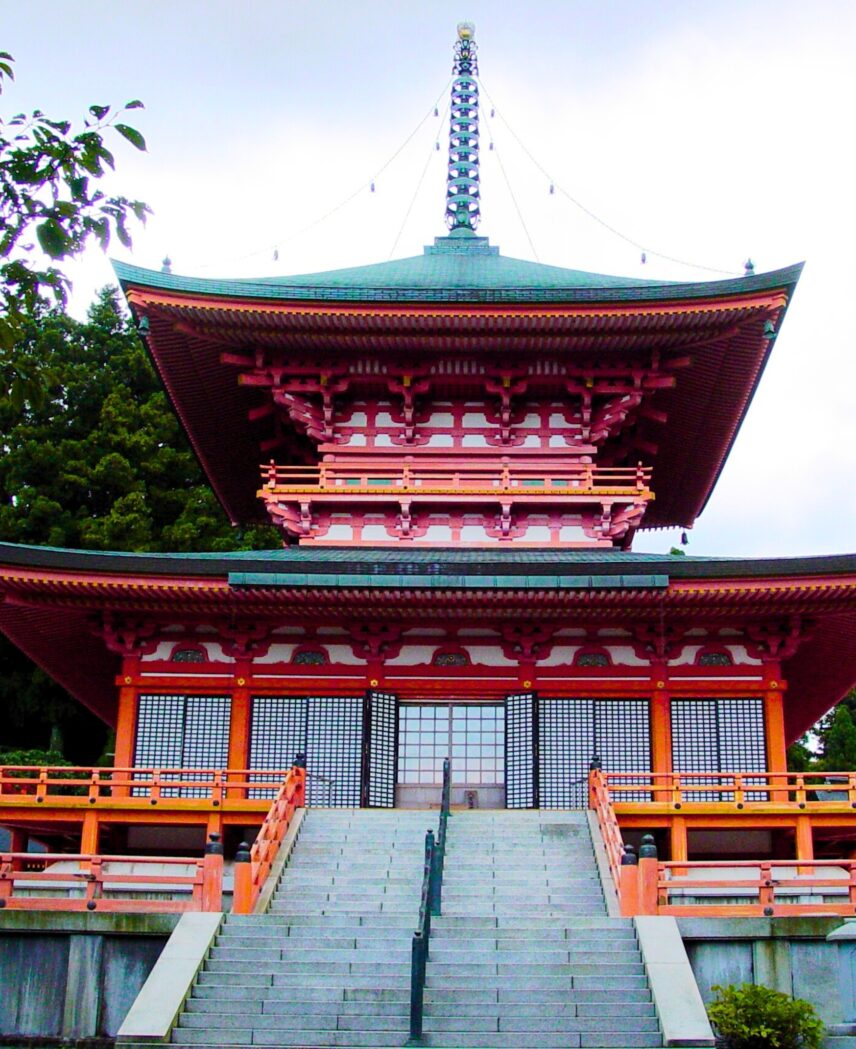

Trip Overview
Departures
Click for Dates + Prices
Duration
10 Days
Activities
Cultural
Hiking
Physical Rating
Moderate
Be the First to Know
Interested in this trip? Get on the list for exclusive information and updates.
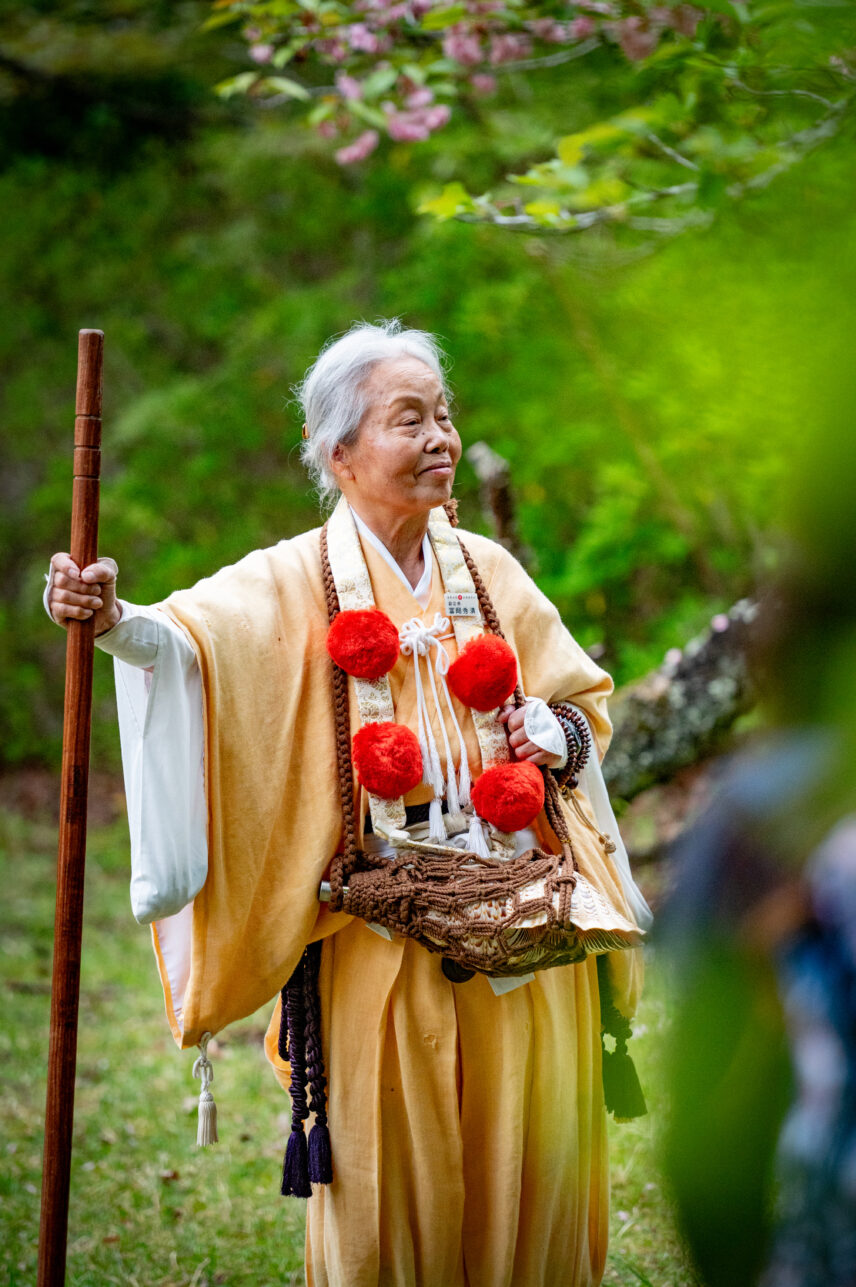

Step Back in Time
Travel deep into the colorful and cultural pockets of Japan from Osaka to Kyoto. This country is deeply steeped in tradition and ceremony—meditation and reflection are at the heart of Japanese culture. The ancient Kumano Kodo pilgrimage route is testament to this. Spend three days on this sacred path, walking from Takahara to the Nachi Grand Shrine. The landscape will startle you at every turn—from the camphor and bamboo forests to the thousand-year-old conifers of the Kii Mountain region. Follow in the shadowed footsteps of monks, philosophers and the female pilgrims who were once forbidden to enter the holy sites of Koyasan.
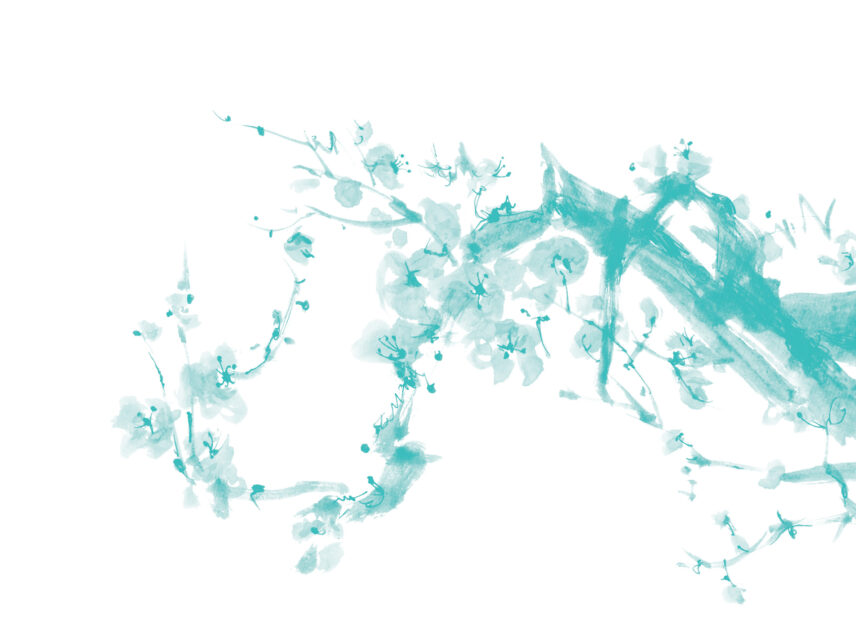
A Transformative Pilgrimage

Enter a World of Deep Traditions
On this journey into Japan, we learn about the religious practice of Shugendō, hear the stories behind the elaborate shrines and temples and witness the evolution of the Women’s Pilgrimage Course. We sleep in traditional ryokans on tatami mats, and at day’s end, it’s all about purifying in the healing waters of the onsens. Introduce your palate and senses to some truly unexpected local flavors and surprises.

Itinerary
-
Day 1
Osaka
歓迎 (Welcome) to Japan
Upon arrival at Osaka Kansai International Airport (KIX), you will be transferred from the airport to our hotel by scheduled shuttles.
At the hotel, we meet our Wild Women guide and gather for a trip debrief before sharing stories and laughs over dinner. This is just the beginning of our transformative pilgrimage together.
Prepare your small backpack this evening, and hand over the rest of your luggage to be sent to Yunomine or Watarase Onsen (1 night without luggage).
Included Meals
Dinner
Accommodations
Karaksa Shin Osaka Grande or similar
Travel
Train (1 hour 30 min)
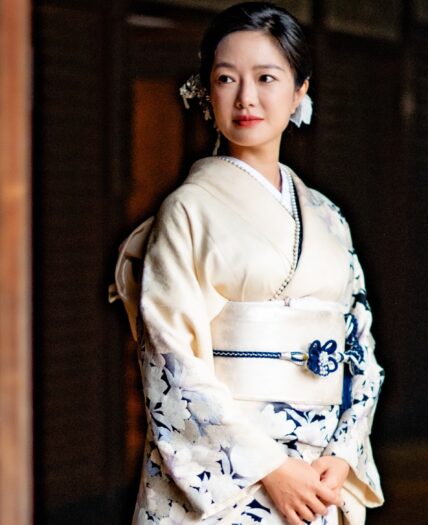
-
Day 2
The Sacred Kumano Kodo
Soaking it in
After breakfast at the hotel, we board an early train to Kii-Tanabe and then take a bus to the Takijiri-oji bus stop.
We visit the Kumano Kodo Kan Pilgrimage Center to learn more about the UNESCO World Heritage site and sacred pilgrimage route.
Takijiri-oji is one of the five major oji (subsidiary shrines) in the region—this is the main entrance to the Kumano Kodo pilgrimage route. From this point onward to Takahara, the trail is very steep as we climb into the panorama of the Hatenashi mountain range. Surrounded by the fragrance and shade of the camphor forest, we encounter our first challenge: climbing through the narrow crack of the massive boulders that create the Tainai-kuguri cave. In Japanese, Tainai means “birth canal” and kuguri means “to pass through.”
Upon arrival in Kiri-no-Sato we can soak in a healing traditional onsen (hot spring) before a fun multi-course dinner together.
Included Meals
Breakfast, lunch and dinner
Accommodations
Kiri-no-Sato, Takahara or similar
Travel
Train (2.5 hours), bus (45 minutes)
The Walk
4 miles (6.7 km), or approximately 2.5 hours
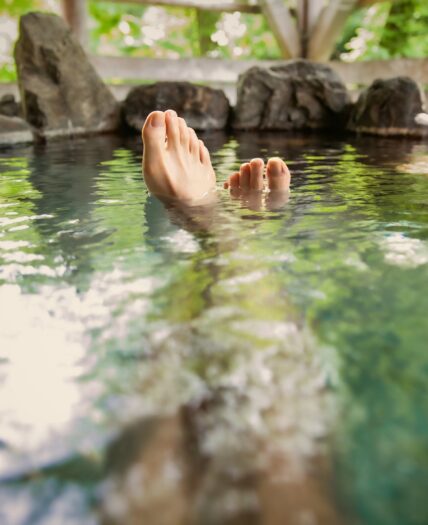
-
Day 3
Kumano
Forested Trails
On foot, we head higher into the mountains along the forested Nakahechi trail, passing abandoned beehives, a former teahouse, shrine gates and kilns. A female yamabushi (a mountain ascetic who practices Shugendo religion) will join us for a section of the walk.
Note: the yamabushi may not be available during this hike specifically (i.e. she may join the group on a different day, depending on her availability).
Pressing on through the serenity, we reach the Hashiori-Toge pass after a short climb. Our descent follows a cobbled path and staircase to Chikatsuyu.
Our final stretch involves an ascent up to Tsugizakura-Oji, beloved for its giant cedar trees and glass-clear springs. From here, we transfer by vehicle to our onsen, deep in the belly of the sacred mountains of Kumano.
At our ryokan (Japanese-style inn), it’s time to drift off to sleep.
Included Meals
Breakfast, lunch and dinner
Accommodations
Yunominesou, Yunomine Onsen or similar
The Walk
7.7 miles (12.4 km), approximately 5 hours
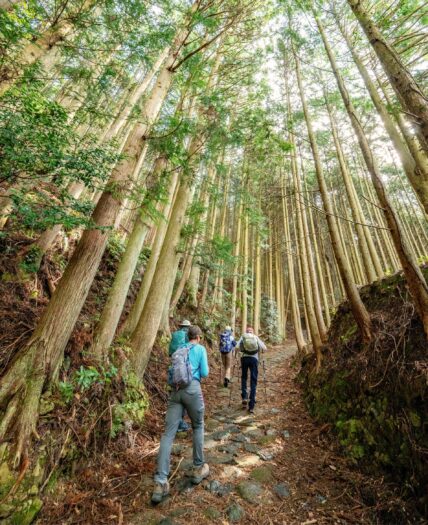
-
Day 4
Pilgrimage to Hongu Taisha
Walking with Reflection
We hop on a local bus to Hosshinmon-oji to begin today’s walk. This meandering route follows a ridge through small villages and verdant forests.
After lunch, we can take a bus or walk the Dainichi-goe route back to our accommodation for the night. It’s a short but relatively steep section with uneven steps over Mt. Dainichi. Near the upper ridge, there’s a shrine that was historically associated with the Shugendo sect in the area.
Before bed, our guide will offer instructions on what to pack for the next two nights (your main luggage will be transferred to Kyoto).
Included Meals
Breakfast, lunch and dinner
Accommodations
Yunominesou, Yunomine Onsen or similar
The Walk (optional)
1.2 miles (2 km)
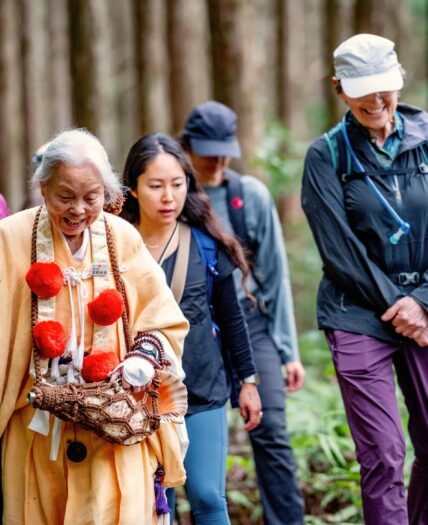
-
Day 5
The Kumano Hayatama Taisha Grand Shrine The Fossil Seawaters
Ancient Shrines
After breakfast, we take a bus to Michinoeki Kumano-gawa where we take a traditional wooden flat-bottomed boat down the Kumano River to the Kumano Hayatama Taisha Grand Shrine and the natural wonder of its 800-year-old Nagi-no-Ki conifer tree.
After absorbing the spiritual magnitude of it all, we travel by private van to the Kumano-Nachi Grand Shrine and walk the Daimon-zaka Shrine Approach. Daimon-zaka (“large gate slope”) is a 1,969 foot-long (600 m) cobblestone staircase of 267 stairs, connecting the base of the valley to Kumano Nachi Taisha, Seiganto-ji Temple and the Nachi waterfall. At the slope’s base, the Meitosugi (“husband and wife cedar trees”) have roots that entwine beneath the path—a reminder of the Kumano Kodo’s beauty above, below and unseen.
We have a traditional dinner and soak again this evening. The hot spring in Katsuragi is known for its powerful high salt concentration of “fossil seawater” (ancient seawater).
Included Meals
Breakfast, lunch and dinner or similar
Accommodations
Katsuragi Onsen Happunoyu or similar
Travel
Bus (25 minutes), boat (90 minutes), private shuttle (30 minutes to shrine and 3 hours to hotel)
The Walk
1.4 miles (2.2 km), approximately 3.5 hours
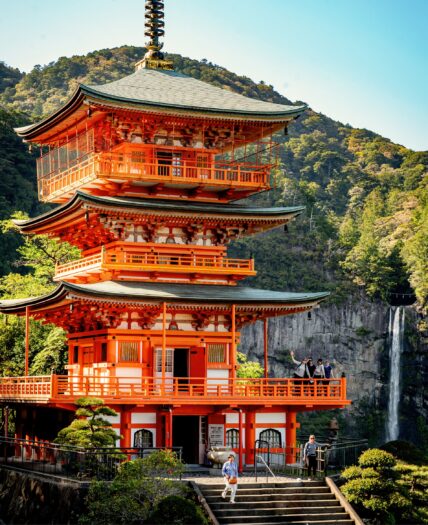
-
Day 6
Katsuragi to Koyasan
Teahouses and Temples
We board an early morning train to Kii-Hosokawa station and begin our five-hour pilgrimage in Chioshi Michi at Kii-Hosokawa station and finish at the Daimon Gate, the entrance to Koyasan.
This 15-mile (24 km) route is known for its 180 stone pillars (known as chioshi) that pepper the trail—we will walk a 8.7 mile (14 km) section of this mystical trail. Our guide will share stories like that of Jison-in Temple, where Kobo Daishi Kukai’s mother could not enter due to the prohibition against women in Koyasan. She passed away here, and Kobo Daishi built the Miroku-do Hall here for her. The temple has been affectionately called Nyonin Koya (Women’s Koya).
At our temple stay in Koyasan, we enjoy a healthy menu of seasonal vegetables, seaweed and edible wild plants. The Buddhist monastery offers morning religious services and Goma prayers, meditation and sutra copying.
Included Meals
Breakfast, lunch and dinner
Accommodations
Temple stay, Koyasan
Travel
Train (1.5 hours)
The Walk
8.7 miles (14 km), approximately 5 hours
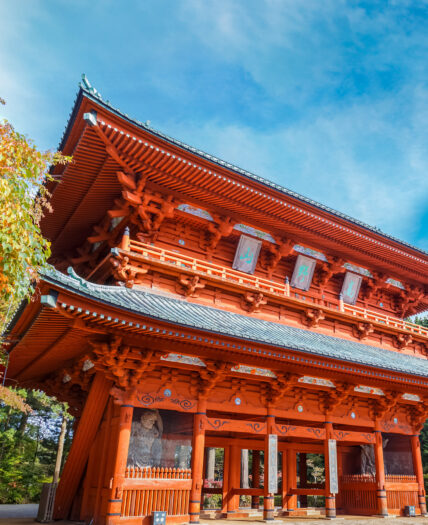
-
Day 7
The Women’s Pilgrimage Course
A Grounding Journey
After breakfast, a private meditation is led by one of the monks of Koyasan.
Later, we follow a section of the lotus flower-shaped Women’s Pilgrimage Course around the perimeter of Koyasan, past the ruins of Nyonindo, to the entrance of the enormous Okunoin cemetery. The tomb of Kobo Daishi, the founder of Shingon Buddhism, is located among the 200,000 gravestones.
Around 1872, female pilgrims were finally allowed to enter the holy sites of this mountain temple complex.
After this incredible walk, we board an express train and make our way to Kyoto, to check into our hotel, refresh and relax.
Included Meals
Breakfast, lunch and dinner
Accommodations
Hotel Vista, Kawaramachi or similar
Travel
Express train (3 hours)
The Walk
Up to 4.3 miles (7 km), approximately 2.5 hours
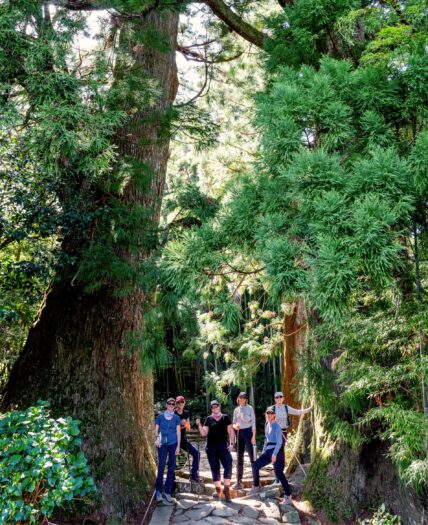
-
Day 8
Kyoto
Finding Zen
We board a train or shared taxi to the Silver Pavilion, a Zen temple in Kyoto’s eastern mountains.
From here, we walk the Philosopher’s Path, a 1.2-mile (2 km) canal-side trail in the footsteps of Nishida Kitaro, a famed philosopher and founder of the Kyoto School of Philosophy. It’s easy to detour from this path as several shops, shrines and spiritual sites are found on the side streets here.
The path ends at Nanzenji, a Zen garden. One of the charms of Nanzen-ji is the ambient tea room with a waterfall view near the front of the temple complex. A regional favorite and Junsei specialty is the yodofu tofu—a hot dish with kombu (seaweed). Take a moment here to absorb the serenity and have a calming green tea.
Tonight, we are treated to a Geiko performance and seasonal dinner in Gion, the Geiko district of Kyoto.
Included Meals
Breakfast, lunch and dinner
Accommodations
Hotel Vista, Kawaramachi or similar
The Walk
Short and sweet but profound! It’s 1.2 miles (2 km).
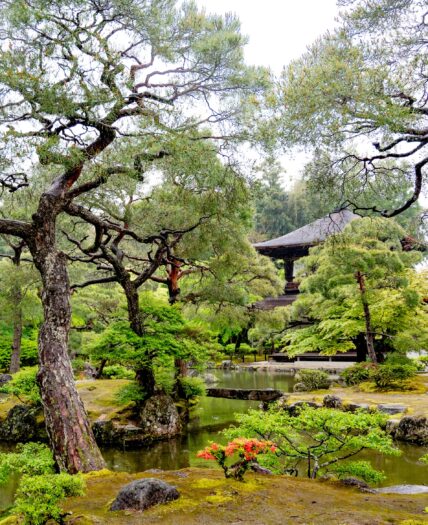
-
Day 9
The Sacred Gyoja Pathway
Monks and Mountains
We have another early bird morning departure to Hieizan Sakamoto Station via train. At Mt. Hiei, we accompany a Dai Ajari to walk the sacred Gyoja Pathway. A Dai Ajari is a priest who has completed an extreme feat of endurance and is considered a living saint or a Buddha within Japan. To achieve such status is so difficult that only 51 monks have been successful in this training in over 450 years.
We follow in the industrious footsteps of the monks who trained on this mountain, immersed in the full rhythm of nature before visiting the Dai Ajari’s temple to share our feelings and thoughts about the essence of spiritual practices and take part in his unique incantation.
After this guided tour, we return to Kyoto brimming with reflections. Later, we gather for our last dinner together to share some laughs, epiphanies and favorite trip moments.
Included Meals
Breakfast, lunch and dinner
Accommodations
Hotel Vista, Kawaramachi or similar
Travel
Train (30 minutes)
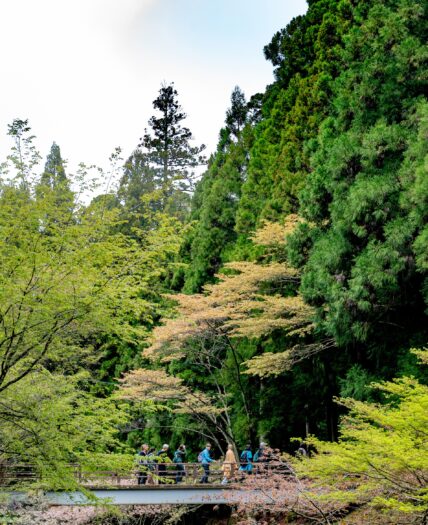
-
Day 10
Departure
決別 (Goodbye) Kyoto
After an early breakfast, transfers will be coordinated as needed to Kansai International Airport (KIX), where we will squeeze each other goodbye.
After this remarkable 10-day journey together it’s time to exchange contact info, photos and ideas for a reunion! Where to next? Another pilgrimage perhaps?
Included Meals
Breakfast
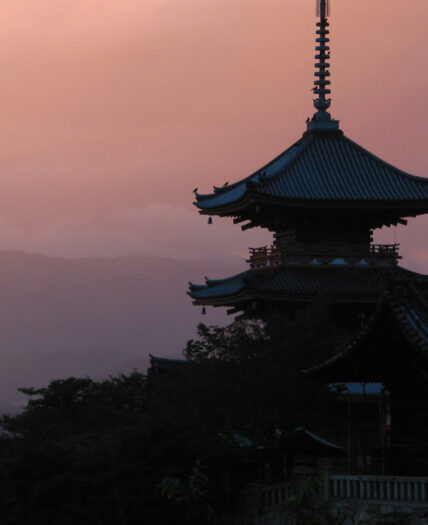
Take a Deeper Dive
Want all the details in one handy package? Download the full itinerary here.

Itinerary
-
Day 1
Osaka
歓迎 (Welcome) to Osaka
Upon arrival at Osaka Kansai International Airport (KIX), you will be transferred from the airport to our hotel by scheduled group shuttles or with an escort on the train.
At the hotel, we meet our Wild Women guide at 6 p.m. and gather for a trip debrief before sharing stories and laughs over dinner. This is just the beginning of our transformative pilgrimage together.
Tonight you will pack your ‘Day Pack’ with the items you will need for one night on the Kumano Kodo trail. Your main luggage will be transferred to your night 3 accommodation. Your guide will let you know which essentials you should bring with you and how best to pack.
Included Meals
Dinner
Accommodations
Karaksa Hotel, Osaka or similar
Travel
Train (1 hour)

-
Day 2
The Sacred Kumano Kodo
Soaking It In
After breakfast at the hotel, we board an early train to Kii-Tanabe, where we will also enjoy a lunch near by, and then take a bus to the Takijiri-oji bus stop.
We visit the Kumano Kodo Kan Pilgrimage Center to learn more about the UNESCO World Heritage site and sacred pilgrimage route.
Takijiri-oji is one of the five major oji (subsidiary shrines) in the region—this is the main entrance to the Kumano Kodo pilgrimage route. From this point onward to Takahara, the trail is very steep as we climb into the panorama of the Hatenashi mountain range.
Upon arrival in Takahara we can soak in a healing traditional onsen (hot spring) before a fun multi-course dinner together.
Included Meals
Breakfast, lunch and dinner
Accommodations
Kiri-no-Sato, Takahara or similar
Travel
Train (2.5 hours), bus (45 minutes)
The Walk
2.4 miles (4 km): ¾ of hike unpaved, ¼ paved
Elevation Gain: 1410.7 ft (430 metres)
Elevation Loss: 656.2 ft (200 metres)
-
Day 3
Kumano
Forested Trails
On foot, we head higher into the mountains along the pilgrimage trail. We continue past reminders of the old highway before stopping for lunch of local delicacies.
Pressing on through the serenity, we reach the Hashiori-Toge pass after a short climb. Our descent follows a cobbled path and staircase to Chikatsuyu. Our final stretch involves an ascent up to Tsugizakura-Oji, beloved for its giant cedar trees and glass-clear springs. From here, we transfer by vehicle to our onsen, deep in the belly of the sacred mountains of Kumano.
At our ryokan (Japanese-style inn), it’s time to drift off to sleep.
Included Meals
Breakfast, lunch and dinner
Accommodations
Hotel in Yunomine Area
The Walk
Takahara to Tsugizakura-oji: 7.7 miles (12.4 km), approximately 6 – 8 hours
Elevation Gain: 2690.3 ft (830 metres)
Elevation Loss: 2034.1 ft (650 metres)
Unpaved trail up to Chikatsuyu and then paved road to Tsugizakura-oji
-
Day 4
Pilgrimage to Hongu Taisha
Walking with Reflection
We hop on a local bus (around 30 minutes) to Hosshinmon- oji to begin today’s walk. This route follows a ridge through small villages and verdant forests before descending to Hongu Taisha for lunch.
After lunch, depending on timing, we can take a bus or walk the Dainichi-goe route back, from Oyunohara to Yunomine. It is a short 1.2 miles (2 km) but relatively steep trail over Mt. Dainichi. Near the upper ridge there is a shrine that was historically associated with the Shugendo sect in the area.
A female yamabushi (mountain ascetics practicing the religion of Shugendo) will join us today on a section of the walk, accompanied by her daughter.
Included Meals
Breakfast, lunch and dinner
Accommodations
Hotel in Yunomine Area
The Walk (optional)
Hosshinmon-oji to Hongu Taisha: 4.6 miles (7.5 km)
Elevation Gain: 623.4 ft (190 metres)
Elevation Loss: 1509.2 ft (460 metres)
Mix trail: half paved road, half unpaved trailHongu Taisha (Oyunohara) to Yunomine: 1.2 miles (2 km)
Elevation Gain: 820.2 ft (250 metres)
Elevation Loss: 623.4 ft (190 metres)
Unpaved trail
-
Day 5
The Kumano Hayatama Taisha Grand Shrine
Ancient Shrines
After breakfast, we head to the Kumano Hayatama Taisha Grand Shrine, where we will have time to stroll around these ancient grounds.
After absorbing the spiritual magnitude of it all, we travel by private van to the Kumano-Nachi Grand Shrine and walk the Daimon-zaka Shrine Approach. Daimon-zaka (“large gate slope”) is a 1,969 foot-long (600 m) cobblestone staircase of 267 stairs, connecting the base of the valley to Kumano Nachi Taisha, Seiganto-ji Temple and the Nachi waterfall. At the slope’s base, the Meitosugi (“husband and wife cedar trees”) have roots that entwine beneath the path—a reminder of the Kumano Kodo’s beauty above, below and unseen.
Included Meals
Breakfast, lunch and dinner or similar
Accommodations
Shukubo or Temple stay, Koyasan
Travel
Private shuttle (30 minutes to shrine and 3 hours and 30 min to hotel)
The Walk
Nachikatsura to Kumano-Nachi Taisha: 0.9 miles (1.5 km), approximately 30 min

-
Day 6
Women’s Pilgrimage Course
A Grounding Journey
Wake up to join the Gonbyo, a monk’s morning prayers before breakfast.
Later, we start the Nyonindo trail, a section of the lotus flower-shaped Women’s Pilgrimage Course, which leads around the perimeter of Koyasan, past the ruins of Nyonindo, to the entrance of the enormous Okunoin cemetery. The tomb of Kobo Daishi, the founder of Shingon Buddhism, is located among the 200,000 gravestones.
You will have the choice to head back to the hotel by bus or on foot. If timing aligns, join the monks for an afternoon Ajikan meditation.
At our temple stay in Koyasan, we enjoy a healthy menu of seasonal vegetables, seaweed and edible wild plants.
Included Meals
Breakfast, lunch and dinner
Accommodations
Shukubo or Temple stay, Koyasan
Travel
Bus (20 minutes)
The Walk
Fudozaka-guchi to Okunoin bus station: Up to 4.3 miles (7 km), approximately 2.5 – 3 hours

-
Day 7
Mt. Hiei
In the Shadows of Warrior Monks
We’ll have a leisurely morning exploring Koyasan before heading by private transfer to the Mt. Hiei area.
We visit the Enryakuji Temple, one of the most important monasteries in Japanese history and the headquarters of the Tendai sect of Japanese Buddhism.
Today, pack your small daypack for one overnight stay, as we forward your main luggage onward to Kyoto.
Included Meals
Breakfast, lunch and dinner
Accommodations
Hotel in Mt. Hiei area
Travel
Private transfer (3 hours)
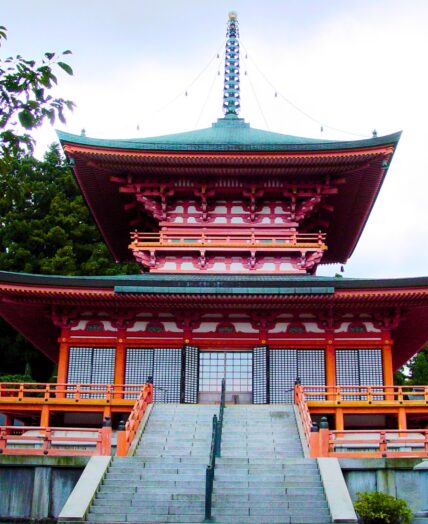
-
Day 8
The Sacred Gyoja Pathway
Monks and Mountains
At Mt. Hiei, we accompany a Dai Ajari to walk the sacred Gyoja Pathway. A Dai Ajari is a priest who has completed an extreme feat of endurance and is considered a living saint or a Buddha within Japan. To achieve such status is so difficult that only 51 monks have been successful in this training in over 450 years.
We follow in the industrious footsteps of the monks who trained on this mountain, immersed in the full rhythm of nature before visiting the Dai Ajari’s temple to share our feelings and thoughts about the essence of spiritual practices and take part in his unique incantation.
After this guided tour, we head to Kyoto brimming with reflections.
Included Meals
Breakfast, lunch and dinner
Accommodations
Hotel Vista, Kawaramachi or similar
Travel
Train (30 minutes)

-
Day 9
Kyoto
Finding Zen
We board a local bus or shared taxi to the Silver Pavilion, a Zen temple in Kyoto’s eastern mountains.
From here, we walk the Philosopher’s Path, a 1.2-mile (2 km) canal-side trail in the footsteps of Nishida Kitaro, a famed philosopher and founder of the Kyoto School of Philosophy. It’s easy to detour from this path as several shops, shrines and spiritual sites are found on the side streets here.
The path ends at Nanzenji, a Zen garden. One of the charms of Nanzen-ji is the ambient tea room with a waterfall view near the front of the temple complex. A regional favorite and Junsei specialty is the yodofu tofu—a hot dish with kombu (seaweed). Take a moment here to absorb the serenity and have a calming green tea.
Tonight, for our final meal together, we are treated to a Geisha or Maiko performance and seasonal dinner in the Gion district of Kyoto. In Kyoto, Geisha are called Geiko and apprentice Geiko are called Maiko. These artists are highly trained practitioners of traditional Japanese arts and customs of hospitality.
Included Meals
Breakfast, lunch and dinner
Accommodations
Hotel Vista, Kawaramachi or similar
TRAVEL
Local bus or taxi (30 minutes)
The Walk
Short and sweet but profound! It’s 1.2 miles (2 km).

-
Day 10
Departure
決別 (Goodbye) Kyoto
After an early breakfast, transfers will be coordinated as needed to Kansai International Airport (KIX), where we will squeeze each other goodbye.
After this remarkable 10-day journey together it’s time to exchange contact info, photos and ideas for a reunion! Where to next? Another pilgrimage perhaps?
Included Meals
Breakfast


What’s Included
- An English-speaking Japanese female guide
- Nine nights’ accommodation in hotels, including four nights in traditional tatami-style rooms (*Optional private single upgrades are only available for seven of the nine nights and are subject to availability)
- All ground transport including trains and buses
- Group arrival and departure airport transfers
- Traditional boat tour of the Kumano River (2024 only)
- A walk with a female Yamabushi and Dai Ajari
- All meals from dinner on Day 1 to breakfast on Day 10
- Geisha (Geiko) performance in Kyoto
- Admission to shrines and temples
Please Note:
All applicable taxes are included in the trip price.
At some of the boutique accommodation we use we are unable to secure private rooms. On this trip the private upgrade is for seven out of the nine nights, on the other two you may have a roommate.
Itineraries may be subject to change without notice due to weather and other environmental conditions. Please review our Booking Terms.

Trip Details
Know Before You Go
Click HERE for all of the logistical details you’ll need to know prior to departure—including the packing list, arrival and departure details and suggested tipping information.
This trip starts in Osaka Kansai International Airport (KIX) and finishes in Kyoto, Japan, with a transfer back to Osaka Kansai International Airport (airport code: KIX).
The Kumano Kodo
Please note that the distance covered on the Kumano Kodo on this trip does not qualify for a dual pilgrim status if you have a Compostela from the Camino de Santiago. You must walk 62 miles (100 km) on the Kumano to receive this unique designation.
The Wild Women Way
If you’re wondering how we roll, it’s together. The Wild Women Way is our modus operandi, our mantra and our rock solid foundation. You can learn more about our Wild Ways HERE.

How We Support You
Ready for a big adventure? We’re in it together. On this trip, we spend many days hiking. Yes, some of it can be a challenge, but you’re never alone. Like thousands of women before you, you’ll draw on strength you didn’t know you had and come out feeling like the goddess you are.
Like all our trips, this trip can be scaled to suit different abilities and comfort levels. If you have concerns or reservations about your ability to complete or enjoy this trip due to any physical or medical reasons, please contact us and let’s talk about it.
What the Trip Entails
This is an active hiking adventure. We would like you to be comfortable with the following:
- Walking distances on this trip vary from 1.4 to 7.7 miles (2.2 to 12.4 km) and involve steep climbs, uneven steps, cobblestone, and slippery moss-covered paths
- The Kumano Kodo section will involve walking 18 miles (29 km) over the course of 4 days
- Some days involve long train travel of up to 3 hours and several modes of transportation. Please pack efficiently and choose sensible luggage that suits boarding trains and buses
- On this pilgrimage trail, you will be carrying essential items only (in your day pack) for a total of 2 nights on trip and your main luggage will not be with you during those nights. Please refer to the itinerary for those nights without your luggage.
- Four nights will be spent in accommodations offering tatami rooms, which are traditional Japanese rooms with tatami flooring. These Washitsu-style accommodations have sliding doors (fusuma) versus hinged doors
- Expect a menu and flavors that may be unfamiliar to you
- If you have tattoos, you may not be permitted to enter certain onsens
- Physical Rating: Moderate (Good level of fitness required. Trips are moderately challenging with an average of 4 to 6 hours of activity each day.)
